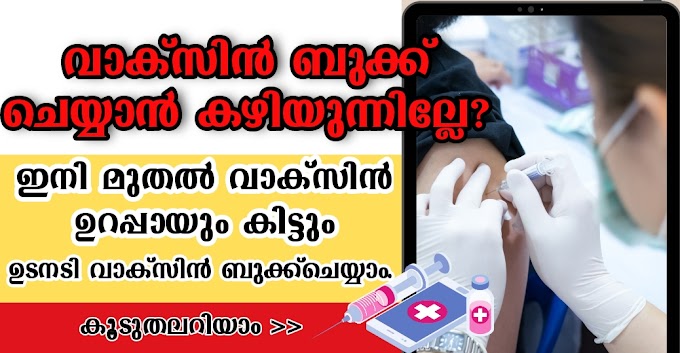People who live in areas where snakes are common or those who are at a high risk of being bitten by a snake should know what to do if they get bitten. In this article, we will go through the complete guide to snake bite first aid. We will go over what to do and not do after being bitten by a snake. The poison that frightens snakes is mainly meant for them to catch their prey. Snakes do not use poison unless they are pitted against enemies, including humans.
The poison is a complex mixture of a variety of chemicals. The main types of toxins are Haemotoxin that affects the blood and neurotoxin, which affects the nervous system. There are also types of toxins such as Myotoxin, which affects the muscles, and Cardiotoxin, which affects the heart. In most snakes, more than one type of venom is found together. There is no doubt that once the poison enters the body, there will be minor health issues.
But the truth is that out of the hundreds of snakes found in India, only a handful have the toxin that causes human deaths. The highest number of deaths in India are caused by the bites of four types of venomous snakes : Spectacled Cobra, Common Indian Krait, Viper , Russell's Viper and Saw-scaled Viper. Therefore, not all snake bites should be read in conjunction with death caused by poisoning. Even if it is a poisonous snake, if a snake bites a person as soon as it catches its prey, then the snake's venomous bag does not necessarily have to be poisonous. Known as 'dry bites', these snake bites are risk-free.
Behind the eyes of the venomous snake lies the deformed venom gland of the spit gland. Situations such as a non-venomous snake bite, a venomous snake bite with a non-venomous sac, and an injury that appears to have been misconstrued as a snake bite are the common catch of those who say that snake venom is treated. The hours spent going to them can often even lead to the loss of a patient's life.
If you are bitten by a snake, you don't have to rush to identify the snake immediately. There are various reasons for this.
1. The anti-snake venom treatment (ASV) available in India is polyvalent that works against the venom of four major snakes. Therefore, if you are sure that you have been poisoned, the treatment will be accurate whether the snake is identified or not.
2. The doctor determines treatment by looking at the physical symptoms of the person who has been bitten, rather than identifying the snake. This is how the ASV dose is determined. This dose does not change according to the person's age, the size of the wound bitten by the snake, or any other common cause. On the contrary, it is by looking at the physical symptoms of the patient to decide the amount of anti-toxin medication to be given and other physical abnormalities are resolved.
3. Wasting time looking for the snake can worsen the patient's condition.
4. It doesn't have to be the snake that has been bitten. Most of the snakes have common habitats. There may be more than one snake in an area. Sometimes the patient may be bitten by a non-poisonous pump and the person looking for the snake is bitten by a poisonous snake. What is required to deal with a poisonous creature is skill, not courage. Act wisely.
Don't give in to jokes that if you bite a snake, you'll get poisoned if you bite it back. If you look for a snake to bite back, there is no other benefit than buying a second bite.
It's only natural to be afraid. But, panic and an attempt to run away can speed up the blood circulation in the body and quickly deliver the poison to the heart, kidneys, and brain. If alone, make sure that the bitten part is below the heart. This can delay the toxicity reaching the vital organs. Ask for help over the phone or something as soon as possible. Understand that it's time for life not to move the bitten part.
Although tying it tightly with a cloth is a common practice, it is not particularly beneficial. Moreover, there is a possibility that excessive tightening of this knot can block the blood flow to the bitten area and that part becomes unusable. Now, if you are tying it, there should be flexibility to climb a finger. If you are bitten on your hands and legs, take off your watch and jewellery. If there is swelling later, these are likely to become tight and difficult. If there is blood flow from the wound, the wound can be tied with a clean cloth.
You don't have to waste time trying to catch a snake or take a picture of it. As mentioned earlier, there is not much relationship between snake recognition and treatment. The most important thing is to give the patient the required treatment as soon as possible. If you can take a picture on your mobile from a safe distance, it may help the treating doctor to see if the snake is poisonous or not. Even if you can't do this, leave it and don't waste the time to rush the hospital.
There are some things to keep in mind when taking a person who has been bitten by a snake to a hospital. Let's summarize it in the English text below.
"Do it RIGHT"
R - Reassure the Victim/ Comfort the person who has been bitten by a snake
I – Immobilize the bitten part without tight bandages
Do not move the bitten part. For no reason should you cut off the blood flow in that area by wearing a tight knot.
G H – Get the patient to Hospital as soon as possible. Anti-venom is the only cure for a venomous snakebite
Get to the hospital as soon as possible. ASV is the only treatment for a venomous snake bite.
T – Tell the doctor of any signs or symptoms that happen on the way to the hospital
Tell the doctor clearly the specific symptoms seen in the patient from the time of the bite to the arrival of the hospital.
Things not to do after a snake bite :
The precious hours spent on unscientific treatments may push the patient from misery to disaster. Placing a poisonous stone or wasting time on herbal medicines will not help in a condition where the poison is mixed in the blood. Valuable time to save the patient will also be lost in this way.
Do not drink, smoke or eat food. Alcohol and a substance called nicotine in tobacco can cause blood vessels to expand and cause the poison to get mixed in the blood very quickly. The ingredients in some food items (e.g. the caffeine present in tea and coffee) work in the same way. Remember, these are not substances that should be used to reduce stress caused by a snake bite. The most essential thing is to get treatment without wasting time.
No medicines or leaves of any kind should be attached or taken. It is important to find a way to get the injury to medical attention as soon as possible. The poisoned wound should not be prone to infection. Moreover, do not try to drain the blood by making a cut on the bitten area. Being bitten by a poisonous snake that affects the blood can lead to loss of blood clotting capacity. The result will be massive blood loss.
Do not try to spit out blood from the wound with your mouth. The person who sucks the poison is even at risk of getting poisoned, if there are any injuries in the mouth or something..
No ice should be used on the wound/ should not be burned with fire. None of these will prevent poisoning. It will only cause bad effects.
Treatment For Snake Bite :
The treatment of snakebite is mainly ASV. Some tests will be performed prior to treatment to ascertain if there is toxicity in the body and to see if ASV needs to be used. It is a very important test to observe the clotting of 2 milliliters of blood taken out of the body in a glass test tube. Losing the ability to clot blood can be dangerous. In addition, different tests will be performed depending on the patient's symptoms, such as blood content in the urine and RFT, which monitors kidney function. The weight of the eyelids (ptosis) is a sign that can even identify the snake that has been bitten. Dialysis may sometimes be required for viper poisoning. Getting treatment on time is the most important thing.
Snakebites - Superstitions/Myths & Hoaxes :
• One should not sleep if bitten by a snake – there is no scientific basis for this. Not allowing a baby who has been bitten by a snake to sleep and making him scold, scare and cry can be counterproductive.
• If tied tightly over the wound, the blood does not mix in the body – if the bite is on the arm or leg, the blood flow to that part has stopped and it is even likely to become unusable.
• A second bite by a bitten snake can get poisonous – a little more poison may enter the body and treatment may be delayed. Dangerous activity.
• If the snake is hurt, the snake will come back and bite it - the snake has no such feature. There is no memory or divine power. The snake does not even bite it except in cases where it can endanger its life/feel misunderstood to be its prey.
• Supper should be stopped if it is bitten by a neem cobra - it is a non-venomous snake. There is no basis for avoiding food for biting the neem.
Mobile Apps for Identifying the Snakes :
1. Snakepedia
Snakepedia is a comprehensive database on the snakes of Kerala with an extensive collection of photographs and infographics, this app helps to Search, database of Dangerous and Harmless snakes, Lookalike, ID Tips, Ask expert, Fist Aid, Treatment and Hospitals, Podcast, Rescuers etc
Download Snakepedia App.
2. SARPA
This app is an official app by Kerala Forest Department to streamline rescue of snakes from human habitations. It is intended to minimise threats to snakes and humans and to avoid any negative interaction between them. It also aims to create awareness among public regarding snakes and the service they provide to the ecosystem. It also handles snake-bite cases and will help public to find the nearest place where treatment is available.
Download Sarpa App.
Contact Details of Snake Rescuers in Kerala :
Download the list of Snake Rescuers contacts published by Kerala Forest Department : Download



.png)










